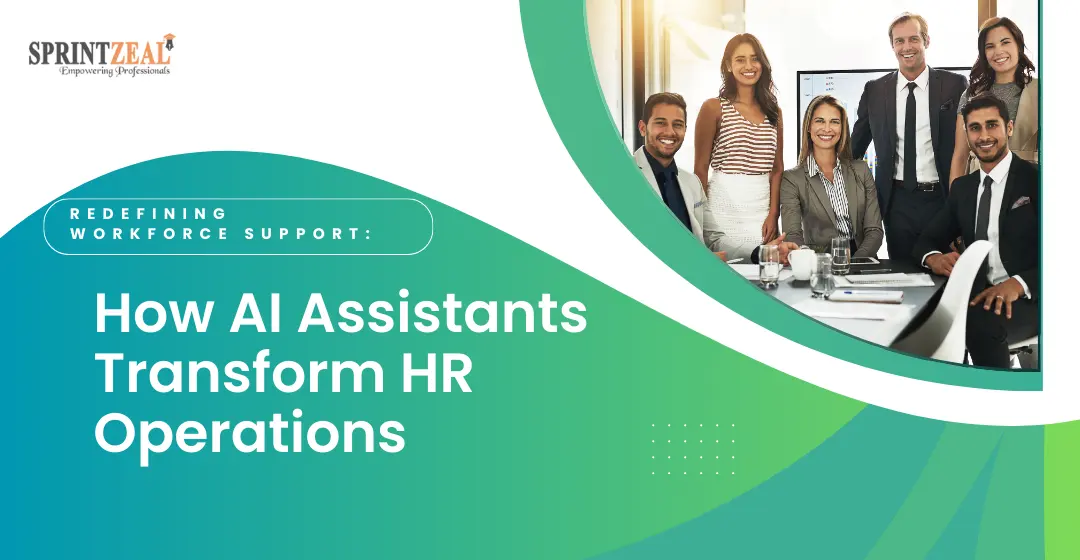The Importance of Ethical Use of AI Tools in Education
-
 By John Jones
By John Jones - Published on Nov 14 2025
No secret that AI has become a big part of modern education. AI tech is penetrating deep into learning environments. It's changing traditional ways of teaching, assessing knowledge, and academic interaction. But along with new opportunities come a bunch of challenges. The latter are directly related to the ethics of AI in education. Misuse of such technologies can lead to a breach of academic integrity. The worst-case scenario is a loss of trust between participants in the educational process. That is why the ethical use of AI is not just a technical issue. It is a moral and social responsibility of all participants in the educational space.
Table of Contents
AI in Education. Ethical Aspects of Use
Modern AI systems really do facilitate the learning process. We are talking about automatic translators, text generators, and educational bots. They help students:
- Process information faster;
- Create projects;
- Edit texts;
- Prepare presentations.
Still, relying too much on these technologies can be a problem. The ethical considerations of AI are about making sure that technology doesn't take away students' ability to think for themselves. AI shouldn't replace human intellectual effort. Instead, it should be a tool that develops skills. The use of AI without understanding its limitations can lead to:
- A decline in the education quality;
- An undermining of the academic integrity principles.
Tools for checking integrity
The issue of plagiarism has become particularly relevant. This is due to the abundance of internet materials available to students. Thus, they should utilize tried-and-true methods to guarantee integrity and openness in writing. PapersOwl's plagiarism checker free is such a practical approach. Identifying textual similarities aids in preventing unethical copying. This online tool is designed specifically to help students check their papers before submission. Thanks to it, students can identify potential similarities and get professional help in improving their own text. The tool works quickly. It has a high level of accuracy. Mentioned features make it an effective solution for those who strive to adhere to the academic integrity principles.
Responsibility of teachers and students
The problem of ethical issues in education lies not only in the use of technology by students. Teachers also need to review their approaches. Educators should teach young people about AI. They should do this in the following paradigms:
- How do algorithms make decisions?
- Why is it important to verify the accuracy of results?
- How can bias in data be avoided?
In turn, students must realize that AI is not a “magic button” that does everything for them. It is a tool that must be used wisely, with an understanding of ethical issues in school and personal responsibility. The ability to use technology ethically is becoming part of modern academic literacy.
Challenges. Potential threats
1. If automated systems evaluate work, make recommendations, and create training plans without human involvement, this may diminish the role of the teacher as a mentor. There is a danger that education will become a technical process. Moreover, it will be devoid of ethics and emotion.
So, it's vital to keep things balanced. Of course, AI can be a helper. But it shouldn’t be a replacement for human interaction. Teachers should stay the ones who set moral standards. They should keep shaping students' critical thinking and ethical awareness.
2. AI systems can create texts that look convincing. Yet, they are not always reliable. This raises new ethical issues in education. Namely, how to teach students to distinguish between true information and artificially generated one?
Teachers must actively develop the following skills in students:
- Fact-checking;
- Analytical thinking;
- Independent search for sources.
Ethical use of AI in this case means fostering a critical attitude towards the results of technology.
Benefits of Ethical AI Implementation in Education
Trust is a key element of the educational process. It is built through honesty and respect for everyone's intellectual work. When educational institutions implement clear standards for the AI ethical use, they create an environment of trust. Students will feel that their efforts will be evaluated fairly. Teachers, in turn, can confidently use systems to analyze progress. Therefore, ethical issues in AI should be a focus for those schools that integrate technology into their teaching process.
Equal opportunities
AI can help students with special needs. In particular, by creating adaptive learning environments. At the same time, the same technologies can exacerbate inequality. The latter will happen if there is no appropriate approach.
Ethical implementation of AI involves:
- Transparency in the creation and use of algorithms;
- Ensuring equal access to technology;
- Preventing discrimination.
Given the above, the ethics of AI in education is to ensure that technological progress serves everyone without exception.
Data protection
The security of personal data remains one of the main challenges. AI works with a huge amount of information. These are students' grades, behavior, and learning styles. Without proper ethical standards, this information can be misused.
Ethical considerations of AI stipulate that any use of student data must be transparent and voluntary. Schools and universities must ensure data protection at all stages of its processing. They must also explain to users how the algorithms that analyze their data work.
Conclusion
The ethical use of AI in education is a prerequisite for the development of a high-quality and equitable learning environment. Ethics of AI in education should be the basis of all educational strategies. Those where technology serves people. Students and teachers must understand that they are responsible for their behavior in the digital realm. The fundamental values without which no innovative tool can create real educational value must be:
- Ethics.
- Transparency.
- Respect for intellectual property.
- Honesty.
The true power of AI lies not only in its algorithms. It is in how we decide to use it. When ethical issues in AI are placed at the center of educational policy, we can build a trusted future. The one where technology and ethics work together for the benefit of knowledge and development.
Subscribe to our Newsletters
Popular Programs
Trending Posts
Future of Artificial Intelligence in Various Industries
Last updated on Mar 12 2025
Top 15 Best Machine Learning Books for 2025
Last updated on Oct 4 2024
Redefining Workforce Support: How AI Assistants Transform HR Operations
Last updated on Sep 10 2025
Explore Top 8 AI Engineer Career Opportunities
Last updated on Oct 18 2023
The Benefits of Machine Learning in Data Protection with ISO/IEC 42001
Last updated on Aug 1 2024
AI Engineer Salary in 2024 - US, Canada, India, and more
Last updated on Feb 29 2024
Categories
- Other 62
- Agile Management 57
- Cloud Computing 50
- Project Management 170
- Big Data 58
- Business Management 79
- Digital Marketing 73
- IT Service Management 29
- Programming Language 47
- AI and Machine Learning 67
- IT Security 108
- Quality Management 77
- IT Hardware and Networking 25
- Microsoft Program 4
- Workplace Skill Building 11
- Risk Management 9
- Information Security 8
- Leadership and Management 7
- Corporate Training and Development 1
Trending Now
How Artificial Intelligence Has Made Understanding Consumer Buying Behavior Easy in 2025
Article7 Amazing Facts About Artificial Intelligence
ebookMachine Learning Interview Questions and Answers 2024
ArticleHow to Become a Machine Learning Engineer
ArticleData Mining Vs. Machine Learning – Understanding Key Differences
ArticleMachine Learning Algorithms - Know the Essentials
ArticleMachine Learning Regularization - An Overview
ArticleMachine Learning Regression Analysis Explained
ArticleClassification in Machine Learning Explained
ArticleDeep Learning Applications and Neural Networks
ArticleDeep Learning vs Machine Learning - Differences Explained
ArticleDeep Learning Interview Questions - Best of 2024
ArticleFuture of Artificial Intelligence in Various Industries
ArticleMachine Learning Cheat Sheet: A Brief Beginner’s Guide
ArticleArtificial Intelligence Career Guide: Become an AI Expert
ArticleAI Engineer Salary in 2024 - US, Canada, India, and more
ArticleTop Machine Learning Frameworks to Use
ArticleData Science vs Artificial Intelligence - Top Differences
ArticleData Science vs Machine Learning - Differences Explained
ArticleCognitive AI: The Ultimate Guide
ArticleTypes Of Artificial Intelligence and its Branches
ArticleWhat are the Prerequisites for Machine Learning?
ArticleWhat is Hyperautomation? Why is it important?
ArticleAI and Future Opportunities - AI's Capacity and Potential
ArticleWhat is a Metaverse? An In-Depth Guide to the VR Universe
ArticleTop 10 Career Opportunities in Artificial Intelligence
ArticleExplore Top 8 AI Engineer Career Opportunities
ArticleA Guide to Understanding ISO/IEC 42001 Standard
ArticleNavigating Ethical AI: The Role of ISO/IEC 42001
ArticleHow AI and Machine Learning Enhance Information Security Management
ArticleGuide to Implementing AI Solutions in Compliance with ISO/IEC 42001
ArticleThe Benefits of Machine Learning in Data Protection with ISO/IEC 42001
ArticleChallenges and solutions of Integrating AI with ISO/IEC 42001
ArticleFuture of AI with ISO 42001: Trends and Insights
ArticleTop 15 Best Machine Learning Books for 2025
ArticleTop AI Certifications: A Guide to AI and Machine Learning in 2025
ArticleHow to Build Your Own AI Chatbots in 2025?
ArticleGemini Vs ChatGPT: Comparing Two Giants in AI
ArticleThe Rise of AI-Driven Video Editing: How Automation is Changing the Creative Process
ArticleHow to Use ChatGPT to Improve Productivity?
ArticleTop Artificial Intelligence Tools to Use in 2025
ArticleHow Good Are Text Humanizers? Let's Test with An Example
ArticleBest Tools to Convert Images into Videos
ArticleFuture of Quality Management: Role of Generative AI in Six Sigma and Beyond
ArticleIntegrating AI to Personalize the E-Commerce Customer Journey
ArticleHow Text-to-Speech Is Transforming the Educational Landscape
ArticleAI in Performance Management: The Future of HR Tech
ArticleAre AI-Generated Blog Posts the Future or a Risk to Authenticity?
ArticleExplore Short AI: A Game-Changer for Video Creators - Review
Article10 Undetectable AI Writers to Make Your Content Human-Like in 2025
ArticleHow AI Content Detection Will Change Education in the Digital Age
ArticleWhat’s the Best AI Detector to Stay Out of Academic Trouble?
ArticleAudioenhancer.ai: Perfect for Podcasters, YouTubers, and Influencers
ArticleHow AI is quietly changing how business owners build websites
ArticleMusicCreator AI Review: The Future of Music Generation
ArticleHumanizer Pro: Instantly Humanize AI Generated Content & Pass Any AI Detector
ArticleBringing Your Scripts to Life with CapCut’s Text-to-Speech AI Tool
ArticleHow to build an AI Sales Agent in 2025: Architecture, Strategies & Best practices
ArticleRedefining Workforce Support: How AI Assistants Transform HR Operations
ArticleTop Artificial Intelligence Interview Questions for 2025
ArticleHow AI Is Transforming the Way Businesses Build and Nurture Customer Relationships
Article7 Reasons Why AI Content Detection is Essential for Education
ArticleTop Machine Learning Tools You Should Know in 2025
ArticleMachine Learning Project Ideas to Enhance Your AI Skills
ArticleWhat Is AI? Understanding Artificial Intelligence and How It Works
ArticleHow Agentic AI is Redefining Automation
Article









